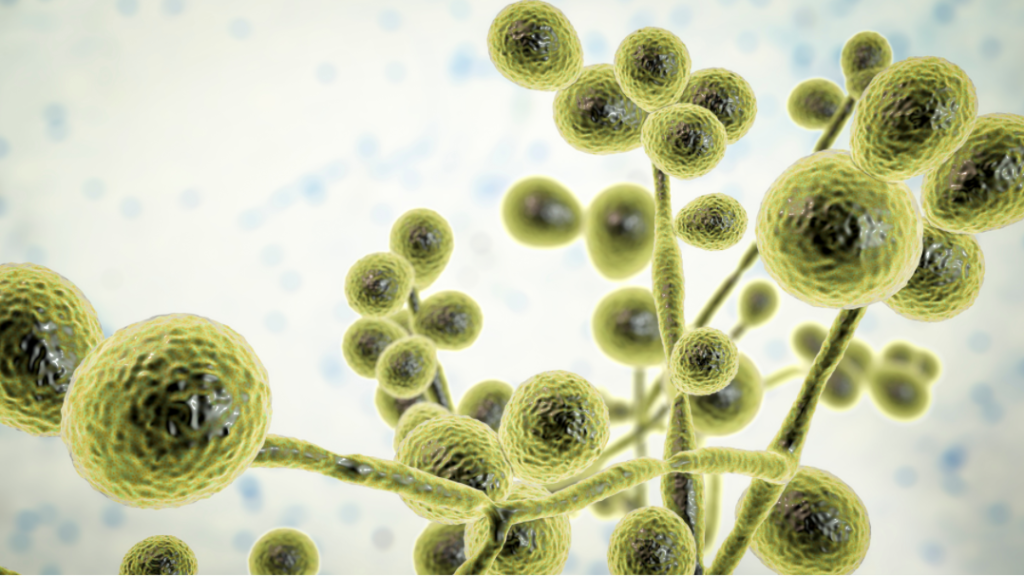With the progress of second-generation sequencing technology, apart from bacteria, another key player in intestinal microbiome, the symbiotic fungi group, was discovered. So far it has been found that the diversity and abundance of symbiotic fungi are associated with a series of diseases, such as inflammatory bowel disease, colorectal cancer, antibiotic-associated diarrhea, irritable bowel syndrome […] The post How does Candida Albicans Cause Disease? first appeared on Creative Diagnostics.
With the progress of second-generation sequencing technology, apart from bacteria, another key player in intestinal microbiome, the symbiotic fungi group, was discovered. So far it has been found that the diversity and abundance of symbiotic fungi are associated with a series of diseases, such as inflammatory bowel disease, colorectal cancer, antibiotic-associated diarrhea, irritable bowel syndrome and allergic rhinitis. As an opportunistic pathogen, when there are conditions such as low immune function and drug intervention, symbiotic fungi can also cause disease. In the intestine, once the intestinal mucosal barrier is damaged by the intestinal mucosa-attached symbiotic fungi, the intestinal mucosal barrier will rupture, and then flora translocation occurs and eventually cause intestinal inflammatory response and even enter the circulatory system, which can result in disseminated fungal disease.

As the dominant flora of intestinal symbiotic fungi, Candida albicans can change its community morphology and abundance according to the immune state of the random body. It can harm the epithelial cells, endothelial cells and other immune cells of the human body through a variety of mechanisms, such as mycelium formation, candida lysin secretion, and extracellular vesicle (EV) secretion, to cause disease. However, its current pathogenic mechanism of Candida albicans and the changes in fungal diversity and abundance caused by the progression of the disease are not fully understood, which leads to the lack of clinical treatment methods. Therefore, it is of great significance to further explore the pathogenic mechanism of Candida albicans to deeply understand fungi and explore new treatment methods.
Candida Albicans Causes Disease by Forming Mycelium
Candida albicans has the ability to differentiate into multiple forms, including but not limited to single-cell yeast, pseudohyphae, hyphae, biofilm state and unique spore form. Candida albicans in different states has unique biological effects.
The basis for the morphological transformation of Candida albicans is its unique cell wall composition. The cell wall of Candida albicans has a two-layer structure. The inner layer is composed of chitin, β-1,3-glucan and β-1,6-glucan, and the outer layer is a protein rich in N- or O-linked mannan modification, called mannoprotein. When the body’s immune function is normal, most Candida albicans adhere to the intestinal mucosa in the form of yeast. At this time, the virulence factors are low in expression, which mainly plays a shaping role in the body’s immune system, representing symbiotic adaptation with the body. When subjected to various stimuli or changes in the living environment, Candida albicans will change from the yeast state to the hyphae state, which can cause tissue invasion and immune escape. Therefore, it is generally believed that filamentation is one of the main virulence characteristics of Candida albicans.
Candida Albicans Causes Disease by Secreting Candidiasis
Candida albicans causes disease by secreting candidiasis. Candidiasis is the first fungal cytolytic peptide toxin discovered by MOYES et al. in 2016 in Candida albicans. It is one of the pathogenic factors of Candida albicans. Candidiasis is a product of the translation encoded by the gene ECE1. ECE1 is an α-helix and contains 7 KR (lysine-arginine) sites. It is first processed by the protein endonuclease Kex2p to produce immature candidiasis, and then the carboxypeptidase Kex1p further removes the C-terminal arginine to form active mature candidiasis. Candidiasis can cause cell necrosis in many ways. Studies have found that Candida albicans hyphae can contact the apical membrane of epithelial cells to form a concave “invasion pocket”, which is conducive to the aggregation of candida lysin. The positively charged KR residue at its C-terminus can interact with the negatively charged components on the plasma membrane and form pores, causing depolarization, inactivation and rupture of the intracellular mitochondrial membrane by Ca+ influx, releasing a large amount of reactive oxygen, leading to epithelial cell necrosis and initiating an inflammatory response.
Candida Albicans Causes Disease by Secreting EVs
EVs are a general term for membrane vesicles secreted by various tissues and cells and wrapped in a lipid bilayer membrane, which contain various bioactive substances such as proteins, lipids, polysaccharides, nucleic acids and mRNA. In 1990, American scientist ANDERSON first observed an opaque papule-like vesicle secreted by Candida albicans using electron microscopy technology, and found that the acid protease in the vesicle was more than 10 times that of white blood cells. However, due to the limitations of technology at the time, it was impossible to conduct in-depth research on the structure, function and secretion mechanism of the vesicle. It was not until 2008 that people discovered that the vesicles secreted by Candida albicans, like other ascomycetes, belong to EVs. With the deepening of research, scholars have gradually revealed the composition and function of Candida albicans EVs, and found that EVs are one of the pathogenic factors of Candida albicans.
57 proteins were identified in EVs released from two Candida albicans strains ATCC 90028 and ATCC 11, 64% of which were localized in the cell wall and cytoplasm. In functional distribution, 24% of the proteins were associated with pathogenicity, 23% of the proteins were associated with lipid, sugar and protein metabolism, and 22% of the proteins were associated with cell organization and biogenesis. The study determined the lipid composition of EVs by high-performance thin-layer chromatography, showing that ergosterol, neutral glycosphingolipids and glucosylceramide (G1cCer) were the main components. G1cCer was recently identified as an important virulence factor in Candida albicans.
Related Products
| Cat. No. | Product Name | |
| DAG-WT5417 | Native Candida albicans Unassayed Control | Inquiry |
| DMABB-JX1054 | Mouse Anti-C. albicans monoclonal antibody, clone 4192 | Inquiry |
| DMABB-JX1055 | Mouse Anti-C. albicans monoclonal antibody, clone 4193 | Inquiry |
The post How does Candida Albicans Cause Disease? first appeared on Creative Diagnostics.






